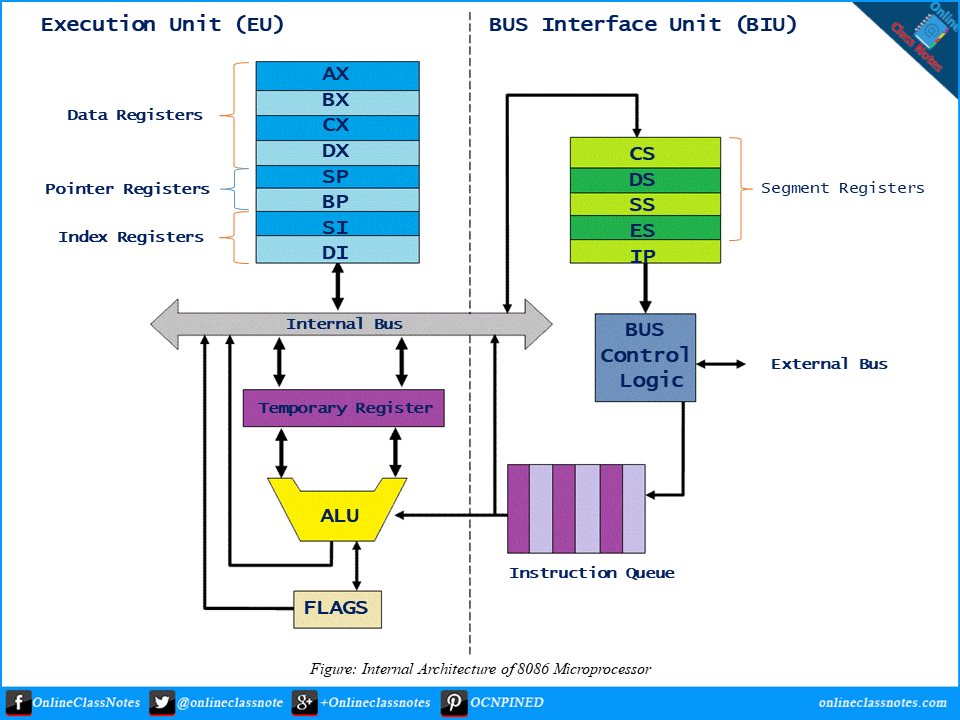Internal architecture of 8086 microprocessor
If we study the internal architecture of 8086 microprocessor, we can see that it has two major units; Execution Unit (EU) and Bus Interface Unit (BIU). They are dependent and work with each other.
In the following given figure, which is a block diagram of 8086 microprocessor, it can be seen it is internally divided into two separate functional units. These are the Bus Interface Unit (BIU) and the Execution Unit (EU). These two functional units can work simultaneously to increase system speed and hence the throughput. Throughput is a measure of number of instructions executed per unit time.
Below is a short description of these two units.
